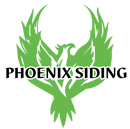The walls of your home are an environmental separator. Their job is to keep the inside in and the outside out. Exterior cladding or siding is your first line of defense against weather elements, and its job is to allow interior control layers (ie. the building envelope) to do their jobs without being assaulted by wind, precipitation and UV rays.
Walls in heating/cooling climates like Canada need to be designed to dry during all seasons, not just winter, which is how we most often build them now.
Moisture will always flow from areas of high concentration to low, and the side of the wall those different conditions are on will reverse between seasons due to insulation and/or air conditioning. In winter it is cold and dry outside, in summer it is hot and humid outside, hence the need to dry in both directions.
In order for something to dry, an exchange of energy needs to take place. When we heat a house, it dries outwards, when we cool a house, it dries inwards (or at least it should – depending if you have a vapor barrier). A well-ventilated air space between sheathing and cladding is an important part of the strategy needed to allow walls to shed moisture in all seasons and conditions.
Drainage planes (building paper, house wrap, etc.) allow any moisture that does accumulate behind siding a chance to drain away harmlessly. The air space between siding and sheathing should also allow humid air to escape. In order for both of these actions to take place, when siding is installed correctly there needs to be a continuous space behind siding where water can drain and air can flow.




